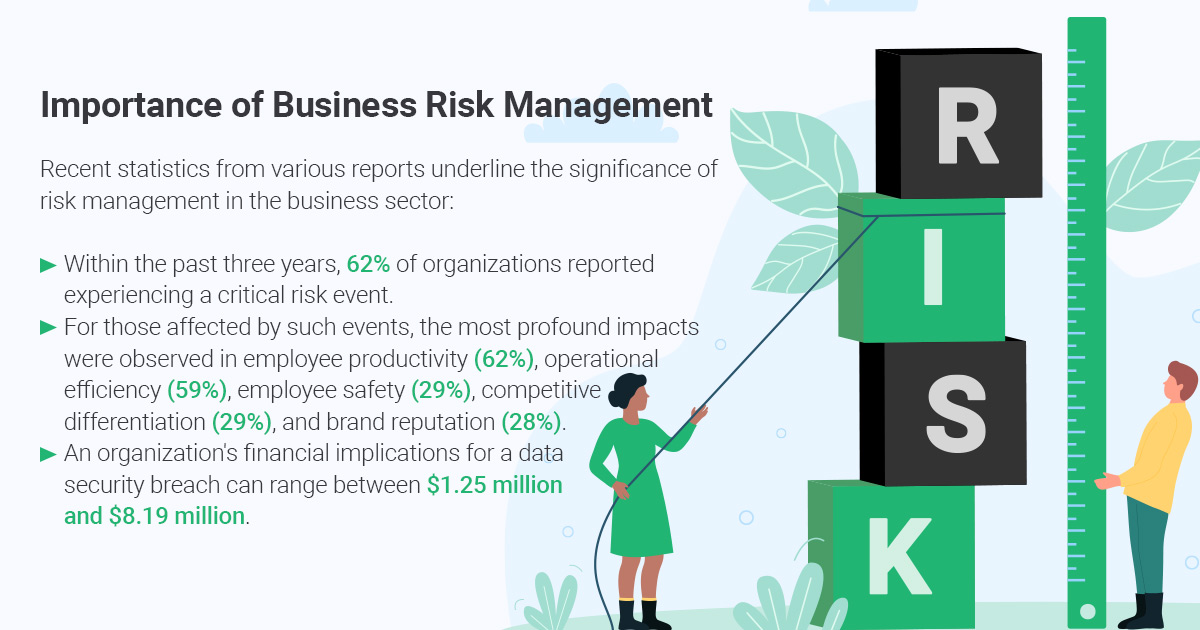The Importance and Importance of Risk Management in Ensuring Corporate Continuity
The Importance and Importance of Risk Management in Ensuring Corporate Continuity
Blog Article
The Important Significance of Risk Management in Getting Organizational Goals
This is where Risk Management actions in, offering an organized strategy to determining, examining, and mitigating prospective obstructions to progress. As we explore the critical role of Risk Management in accomplishing organizational goals, one can't ask yourself yet assist: exactly how does this convert right into real-world success?
Comprehending the Concept of Risk Management in Business

The Integral Function of Risk Management in Strategic Preparation
Integrating Risk Management into tactical planning serves as a guard for companies, securing their lasting plans with a solid foundation of preparedness and resilience. It operates as the organization's radar, detecting possible hazards and susceptabilities that could disrupt the path in the direction of achieving their specified objectives. Risk Management supplies a framework for expecting unpredictabilities and creating suitable reactions, ensuring the organization's survival and success even in the face of difficulty. By including Risk Management into tactical planning, companies can transform these uncertainties into opportunities for development and technology. This calculated interweaving of Risk Management fosters adaptability, making organizations much more robust and enabling them to navigate the ever-changing business landscape confidently. Risk Management ends up being a vital device in critical preparation, instrumental in protecting sustainable success.

Methods for Identifying, Assessing, and Prioritizing Dangers
Browsing the complex landscape of dangers requires the application of specific strategies for their prioritization, evaluation, and identification. The procedure starts with Risk recognition, utilizing devices such as SWOT evaluation, which helps in pinpointing potential hazards and possibilities. Next, Risk evaluation is performed to establish the potential effect and likelihood of each Risk. Devices such as Risk matrices and impact-probability graphes are used for this. Lastly, threats are prioritized based upon their potential effect and probability, enabling companies to focus their sources on high-priority threats. This systematic approach makes certain a comprehensive understanding of the Risk landscape, allowing organizations to make enlightened decisions and efficiently manage risks to achieve their objectives - importance of risk management.
Protecting Organizational Procedures Through Efficient Risk Management
In the business landscape filled with unpredictabilities, reliable Risk Management plays a pivotal role in securing organizational operations. By determining and here are the findings evaluating potential hazards, Risk Management makes it possible for companies to develop robust contingency plans. Organizations need to spend in detailed Risk Management techniques to protect their operations.

Transforming Potential Dangers to Opportunities: The Power of Risk Management
An aggressive method to take the chance of Management involves determining, evaluating, and focusing on risks to design methods that turn them into potential advantages. Thus, by leveraging the power of Risk Management, companies can not only secure their procedures yet also spur growth and accomplish their objectives in an uncertain company setting.
Instance Researches: Success Stories of Risk Management Driving Business Objectives
Successful implementation of Risk Management strategies has generated excellent outcomes in different services, emphasizing the advantages of this strategy. International business like Microsoft and Google, for instance, have actually leveraged Risk Management to reduce hazards and exploit chances, driving their company goals forward. These examples highlight exactly how successful Risk Management can not just steer services clear of possible mistakes but also direct them in the direction of their calculated goals.
Final thought
To conclude, Risk Management is essentially important in attaining organizational objectives. It offers a systematic technique to recognizing, evaluating, and attending to possible risks and opportunities. Even more additional reading than just mitigating risks, it additionally fosters advancement, resilience, and sustainable development. By incorporating Risk Management into tactical planning, companies can better navigate unpredictabilities, protect operations, and capitalise on possibilities, therefore aligning with lasting objectives.
At its core, Risk Management is the process of recognizing, evaluating, and dealing with prospective risks that can adversely impact an organization's purposes or procedures. Next, Risk assessment is performed to identify the possible effect and likelihood of each Risk. Dangers are focused on based on their possible impact and likelihood, permitting organizations to concentrate blog their sources on critical threats. By determining and analyzing prospective risks, Risk Management enables organizations to develop durable backup strategies. A proactive method to run the risk of Management includes recognizing, examining, and focusing on dangers to create methods that turn them right into prospective advantages.
Report this page